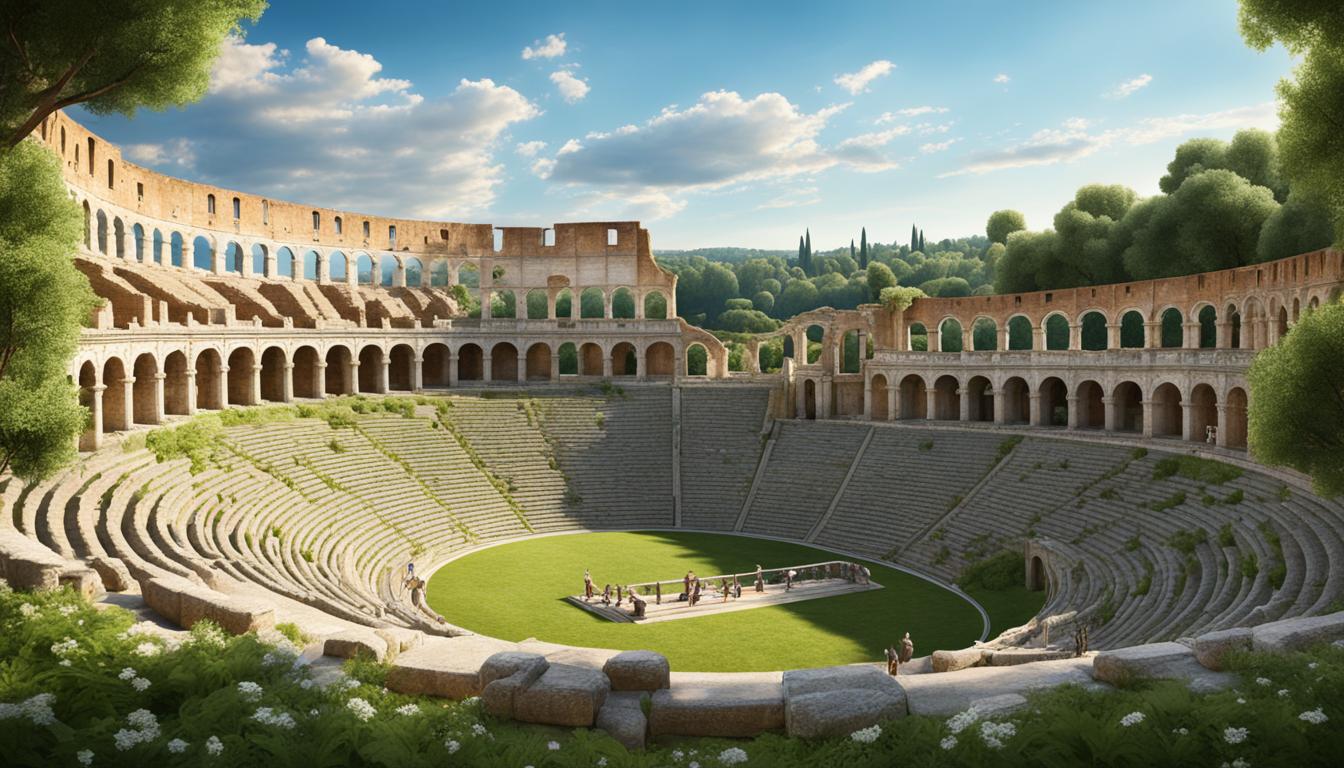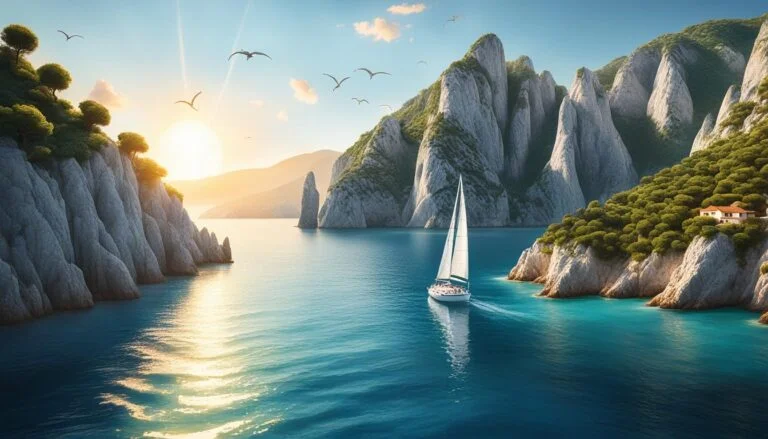Step Back in Time: Explore These Historical Landmarks in Croatia!
Croatia is a captivating country that boasts over1 2,000 years of rich history. From ancient Roman ruins to UNESCO World Heritage Sites, this Balkan gem offers travelers a unique opportunity to immerse themselves in the tales of the past. But what hidden gems await within Croatia’s storied landscape? Have you ever wondered which of Croatia’s historical landmarks are the must-visit sites for history enthusiasts?
Croatia’s cultural heritage is woven into the fabric of its cities, with iconic landmarks dating back to the Roman, Byzantine, and Venetian eras1. The Old City of Dubrovnik, a UNESCO World Heritage Site since 1979, features ancient walls dating back to the 16th century and was once one of Croatia’s most powerful cities1. The Pula Arena, a 1st-century AD Roman amphitheater, still hosts events and festivals today, including the annual Pula Film Festival1. In the historic city of Trogir, a UNESCO World Heritage Site since 1997, visitors can admire stunning Roman architecture and medieval buildings, including the impressive Trogir Cathedral dating back to the early 1200s.
Key Takeaways
- Croatia boasts over 2,000 years of rich history, making it a top travel destination for history enthusiasts.
- Iconic landmarks like the Dubrovnik City Walls, Pula Arena, and Trogir Cathedral offer insights into Croatia’s cultural heritage.
- UNESCO World Heritage Sites, such as Dubrovnik’s Old City and Trogir, showcase stunning Roman and medieval architecture.
- Diocletian’s Palace in Split, a 4th-century Roman complex, is still a bustling hub of activity today.
- Croatia’s historical landmarks, from ancient ruins to fortified castles, provide a captivating glimpse into the country’s past.
Uncovering Ancient Roman Ruins
Croatia’s landscape is dotted with the captivating remnants of its Roman past. One of the most renowned is the Pula Arena, a well-preserved Roman amphitheater dating back to the 1st century AD during the reign of Emperor Vespasian2. This impressive monument, approximately 130 meters by 100 meters with limestone walls standing 32 meters tall, could once hold up to 23,000 people for grand gladiator fights and shows, showcasing the Romans’ love of entertainment2. Today, the Pula Arena still hosts events and festivals, allowing visitors to step back in time and experience the grandeur of ancient Roman architecture.
Another significant Roman ruin is Diocletian’s Palace in Split3. This sprawling complex was built in the 4th century as a retirement home for Roman Emperor Diocletian, who enjoyed living there for 6 years before his death3. While much of the palace is now in ruins, key elements like the gates, Temple of Jupiter, and Diocletian’s mausoleum (now Split Cathedral) remain intact, providing a glimpse into the opulence and grandeur of the Roman era3.
Just outside Split lies the ancient city of Salona, once the center of the Roman Empire’s province of Dalmatia4. Salona, dating back to the 7th century BC, was founded by Julius Caesar in the 40s BC and had up to 60,000 inhabitants during the Roman era, making it the largest archaeological site in Croatia4. Visitors can explore the remnants of the city walls, which took several centuries to construct and had at least 90 towers fortifying the 4 km (2.5 mile) circumference4. The amphitheater, estimated to have held between 15,000-18,000 spectators, hosted gladiator fights until the fifth century when they were banned4.
These ancient Roman ruins scattered throughout Croatia serve as a powerful testament to the country’s rich history and the lasting impact of the Roman Empire. From the grandeur of the Pula Arena to the sprawling Diocletian’s Palace and the impressive Salona archaeological site, visitors can uncover the fascinating stories of Croatia’s past and immerse themselves in the captivating remnants of a bygone era342.
Medieval Marvels and UNESCO Treasures

Beyond the impressive ancient Roman ruins, Croatia is also home to a wealth of medieval landmarks and UNESCO World Heritage sites that captivate visitors. The Old City of Dubrovnik, with its iconic 16th-century walls, is one of Croatia’s most beautiful and historically significant places, rivaling Venice in ancient times5. Dubrovnik became a UNESCO World Heritage Site in 1979, after preserving its Gothic, Renaissance, and Baroque features despite suffering damage through history, including a major earthquake in 1667 and conflicts in the 1990s5.
Another must-see destination is the Historic City of Trogir, with its stunning Roman architecture. Trogir became a UNESCO site in 1997 and is a top destination for history buffs5. Trogir features Venetian architecture and the Cathedral of St. Lawrence, earning its inscription on the UNESCO World Heritage list for blending historical core with urban developments while maintaining its identity5.
Korcula Island’s old town is also a major draw, with the 15th-century St. Mark’s Cathedral and claims that it is the birthplace of Marco Polo. These medieval marvels, combined with Croatia’s Roman ruins and natural wonders, make it an unparalleled destination for travelers interested in exploring the country’s rich heritage6.
Croatia boasts a total of ten UNESCO World Heritage Sites, showcasing the country’s remarkable medieval and ancient landmarks7. Some of the most notable UNESCO-protected sites in Croatia include the Plitvice Lakes National Park, which has been a UNESCO site since 197967, and features 16 blue-green lakes separated by natural dams7. Swimming and water sports are strictly prohibited within the Plitvice Lakes National Park to preserve its pristine beauty7.
These medieval marvels and UNESCO treasures, combined with Croatia’s Roman ruins and natural wonders, make it an unparalleled destination for travelers interested in exploring the country’s rich heritage65.
Historical landmarks in Croatia

Croatia boasts an impressive array of historical landmarks that showcase the country’s over 2,000 years of history8. From ancient Roman ruins like the Pula Arena and Diocletian’s Palace, to medieval marvels such as the Old City of Dubrovnik and the Historic City of Trogir, Croatia offers a unique opportunity to step back in time and immerse oneself in the nation’s captivating past8. These well-preserved sites, many of which are UNESCO World Heritage designated, provide visitors with a tangible connection to Croatia’s fascinating heritage and traditions8.
The Pula Arena, built in the 1st century AD, can accommodate around 5,000 people today and hosts operas and film festivals8. With a capacity of 20,000 spectators, the Pula Arena is depicted on Croatia’s ten-kuna banknote9. The Diocletian’s Palace in Split, a UNESCO World Heritage site, showcases the architectural legacy of the Roman Empire8. Meanwhile, the Old City of Dubrovnik, also a UNESCO World Heritage site, operated as a free state before the 18th century8.
Other notable historical landmarks in Croatia include the Lokrum Monastery, which dates back to at least 1023 and served as a hospital and almshouse until the mid-15th century8. The monastery showcases remains dating back to the 12th and 13th centuries as well as 15th and 16th-century structures9. The Bokar Fortress, completed in 1570, is known for its fortification architecture and hosts performances at the Dubrovnik Summer Festival8. The Walls of Ston are the longest complete fortress system in Europe, acting as the first line of defense for Ston and Dubrovnik8.
From the ancient Greek agricultural practices preserved in the Stari Grad Plain to the panoramic views from the Minceta Tower in Dubrovnik, Croatia’s historical landmarks offer a captivating glimpse into the country’s rich and diverse past8. The Zadar Roman Forum, built between the 1st century BC and the 3rd century AD, features several monuments that have stood for over 2,000 years9. The Fort Lovrijenac, possibly constructed in the 11th century, served as the Red Keep in King’s Landing for scenes in the popular TV series Game of Thrones910.
Croatia’s historical sites offer a range of entrance fees, from the 10-40 Euro tickets for Plitvice Lakes National Park to the 7-12 Euro fees for specific sites within Diocletian’s Palace in Split. The Pula Arena in Croatia charges a 10 Euro entrance fee, while Krka National Park’s fees vary from 7 euros in winter up to 40 euros in summer. Some sites, like Zadar’s Sea Organ and Greeting to the Sun, are completely free to visit and enjoy.
Conclusion
Croatia’s historical landmarks are a testament to the country’s rich and diverse past11. By exploring these ancient Roman ruins, medieval castles, and UNESCO-protected sites, travelers can gain a deeper understanding and appreciation for Croatia’s unique cultural identity11. From the impressive Pula Arena, dating back to the 1st century AD, to the charming old towns of Dubrovnik and Trogir, which achieved UNESCO World Heritage Site status in 199711, these landmarks offer a window into the country’s storied history, making Croatia an unparalleled destination for history enthusiasts.
Whether you’re interested in ancient civilizations, such as the once-thriving Roman city of Salona that boasted a population exceeding 60,000 during the Roman Empire’s provincial rule11, or captivated by the medieval architecture of Trogir Cathedral, which took over 400 years to construct starting in the early 1200s11, Croatia’s historical landmarks provide an unforgettable journey through time11. From the iconic Diocletian’s Palace in Split, dating back to the 4th century11, to the Venetian-influenced Korčula Island, reputed as the birthplace of Marco Polo11, these sites offer a rich tapestry of Croatia’s cultural heritage.
Whether you’re drawn to ancient civilizations, medieval wonders, or the ambiance of bygone eras, Croatia’s historical landmarks deliver an unparalleled travel experience, cementing the country’s status as a premier destination for history enthusiasts111213.







